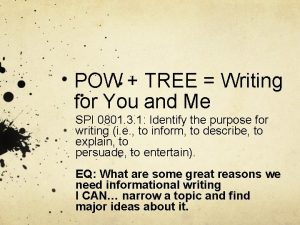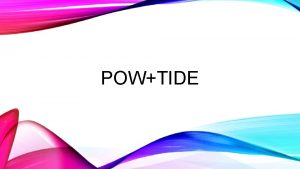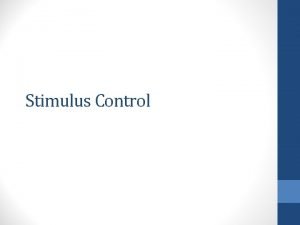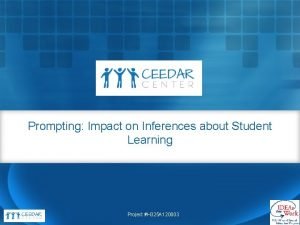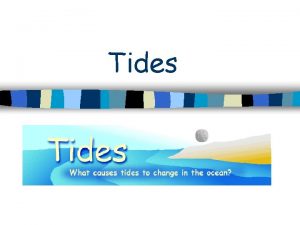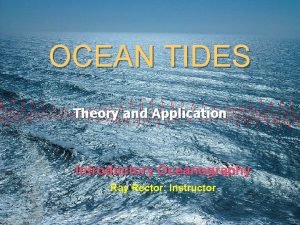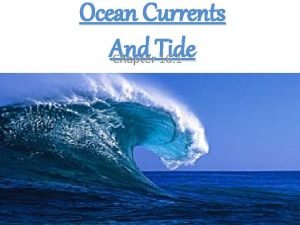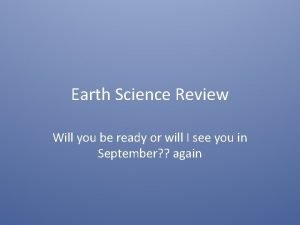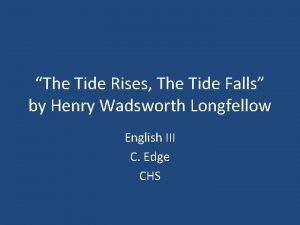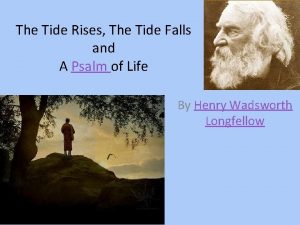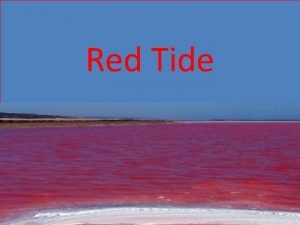POWTIDE POW TIDE LL Pull apart prompt Organize










- Slides: 10

POW+TIDE

POW + TIDE / LL Pull apart prompt Organize my notes Write and say more + T- Topic introduction OR T- Topic introduction I – Information (3) I – Important Information D – Detail (3) D – Details (3) E- Evidence (3) E - End

P=PULL apart the prompt What am I being asked to do? � What should I write about? � Circle key words and ask yourself: What am I being asked to write about here? � Suggestion: Turn the prompt into a question that can be answered. �

O=Organize my notes � Label paragraphs with main ideas if necessary. � Highlight what is important. � Create a list of categories (Example: A list of comparisons and a list of contrasts. )

W=WRITE and say more � Begin writing � Where do I start? Look back at where you “O”rganized your writing.

T=Topic introduction (Thesis) Restate and respond � Hook your reader � Main idea � Topic sentence � Site reference material � List topics/subjects �

I=important evidence d=Detailed explanation X 3 � EVIDENCE from text (“I”) � Cite specific examples from the texts. � Elaboration (”D”) � Give an explanation of the evidence cited.

E = End • Conclusion / Ending • “Sum up” your writing • What did you just write about?

L- Links L- Language Links: Use appropriate transitions to clarify the relationships among ideas and concepts Language: Uses formal style, precise language, domainspecific vocabulary; Vary sentence patterns for meaning, reader/listener interest, and style

A good informative/explanatory essay has important parts: �Informs and educates the audience (avoids “I”, “My” & opinion words) �Is interesting to read �Includes transitions (For example, However, Not Only, Otherwise, Instead, etc…) �Tells the reader the topic or purpose of the essay �Provides the reader information about the topic �Gives the readers additional details and examples about the topic �Demonstrates thorough understanding of the texts �Develops topic with textual evidence �Elaborates on textual evidence to strengthen examination
